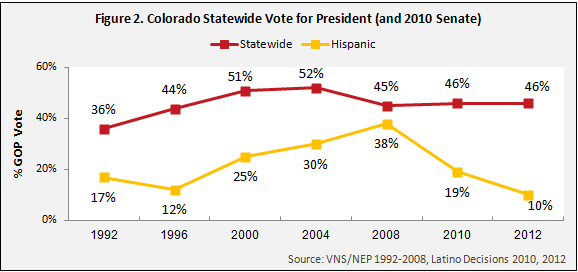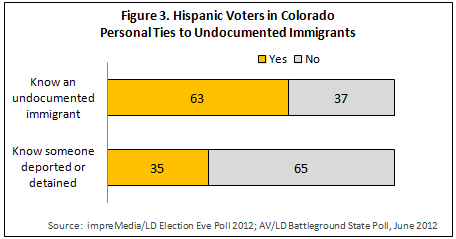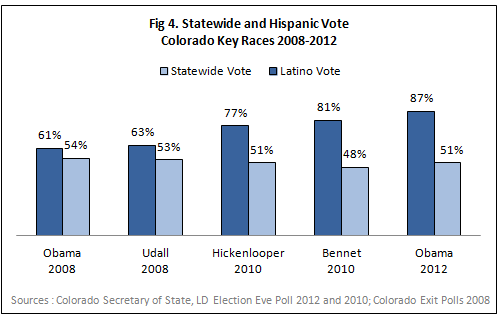Home to one of the fastest growing Latino electorates in the country, Colorado is set to steal the national spotlight in House, Senate and Gubernatorial races this November with immigration playing a key role. In the wake of Colorado’s Gubernatorial primary, experts in immigration politics, Latino issues and civic engagement analyzed Tuesday night’s primary results and discussed opportunities and challenges for both parties. The webinar hosted by America’s Voice featured new analysis from Latino Decisions on Latinos and the state of play in Colorado. [Slide deck HERE, Report HERE]
The report and presentation highlighted a multitude of ways in which Colorado’s surging Latino population in shaping politics in the state. We highlight some key findings here.
1. Hispanic influence is growing in Colorado. Projected population increases will expand the influence of Hispanic Coloradans well into the future. Today Latinos comprise 21% of Colorado’s population and 14% of the eligible electorate. By 2040, one-third of Coloradans will be Hispanic.

2. Republicans have lost ground with Colorado Latino voters. The Latino electorate has been a key component to making Colorado one of the most politically competitive states in the nation. The majority of Hispanic voters in Colorado have voted for Democratic candidates, but Republicans had steadily improved their standing with Latino voters over the course of several election cycles. Those gains, however, evaporated in the most recent elections. If Latino voters continue to vote for Democratic candidates at such high margins, the Republican Party will quickly become irrelevant in Colorado statewide races.

3. Latino voters have significant ties to undocumented immigrants. Hispanic voters in Colorado care about immigration on a personal level—63% have friends or family members that are undocumented. This is true despite the fact that the vast majority, 90%, of Hispanic voters in Colorado are native-born citizens. Thus, good opportunities to build inroads with Latino voters are squandered by political messaging and policies that scapegoat immigrants.

4. Immigration is a deciding factor for Colorado Hispanic voters. Nearly one out of four Hispanics (24%) who voted in 2012 indicated they would be more inclined to support Republican candidates if the Party advanced comprehensive immigration reform including a pathway to citizenship. That 24-point margin among Hispanic voters is enough to determine the outcome in some of the state’s most competitive races, including Colorado’s Governor, Senate and House CD-06 races.
5. Latino voters will determine winners in 2014 Colorado elections. Several Democrats owe their narrow statewide wins to the Hispanic electorate, where super-majorities of Latino voters propelled Democrats to victory. For example, 2012 Republican presidential nominee Mitt Romney won a majority of the vote from White women and White men in Colorado. President Obama’s share of the White vote in Colorado actually decreased by seven points between 2008 and 2012. Absent the Hispanic vote, he would have lost in Colorado.

Hispanic voters have been critical to the most high-profile elections in recent years and their share in the active electorate is growing. If Democrats hold on to these voters, their prospects are bright. Similarly, if Republicans make a concerted effort to win back the Latino voters they had in 2000 and 2004, they will be much better poised to win the most high-profile elections in the state again.


